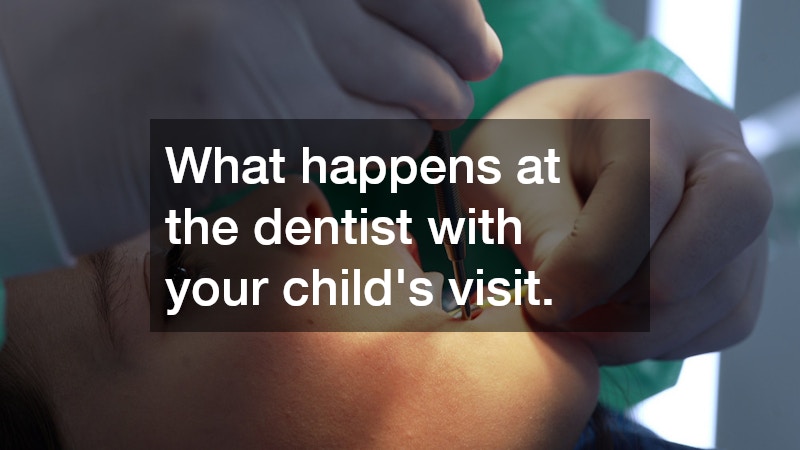What Happens at Your Child’s Dentist Visit: Step-by-Step Explained
Regular dental visits are an important part of your child’s health and development. But if you’re a parent bringing your child to the dentist for the first time, you might be wondering what exactly happens during that appointment. Will it be painful? Will your child feel comfortable? Will the dentist explain everything?
This article will walk you through each step of a typical pediatric dental visit so you and your child can feel confident and prepared.
Why Early Dental Visits Matter
Starting dental care early helps prevent cavities and teaches kids that the dentist isn’t scary. Most pediatric dentists recommend scheduling the first visit by the child’s first birthday or within six months after the first tooth appears. Early appointments allow the dentist to catch small issues before they become big problems.
They also help children get familiar with the dental environment, laying the foundation for lifelong oral health.
Before the Appointment: How to Prepare Your Child
Preparation can make all the difference in how smoothly the appointment goes. Talk about the dentist positively, using simple, reassuring language. Let your child know that the dentist is a friendly doctor who helps keep teeth clean and strong.
Bring any dental or medical records if this isn’t your child’s first-ever visit. If your child has a favorite toy or blanket, bring it along for comfort. Make sure your child has eaten beforehand (but avoid sugary snacks), and dress them in comfortable clothing to help them stay relaxed.
Step-by-Step: What Happens During the Visit
1. Check-In and Waiting Room Activities
Once you arrive, you’ll check in at the front desk. Most pediatric dental offices offer fun, welcoming waiting areas with books, toys, or videos to help distract and entertain children. Parents usually fill out a short medical and dental history form if it’s the first visit.
2. Meeting the Dental Team
Your child will meet the dental hygienist and the dentist, who are trained to work with young patients. They’ll speak in a calm, child-friendly tone and may even show your child the tools they’ll use, calling them by fun names to help make the experience more playful and less intimidating.
3. Oral Exam and Cleaning
The dentist or hygienist will conduct a gentle visual exam to look at your child’s teeth, gums, bite, and jaw development. Depending on your child’s age and cooperation level, a light cleaning may follow. The team may use a soft electric brush or simply wipe the teeth with a small cloth. They will count the teeth and look for any signs of decay or misalignment.
Throughout the process, the dentist explains what’s happening in kid-friendly language, making the visit educational as well as medical.
4. Dental X-rays (If Needed)
In some cases, especially if there are signs of dental issues or if your child is older, the dentist may recommend X-rays. These help see in-between teeth and under the gumline to check for cavities or alignment problems.
Modern dental X-rays are quick, low-radiation, and entirely safe for children. The staff will place a protective apron over your child before taking the images.
5. Fluoride Treatment
Fluoride strengthens enamel and helps prevent cavities. If appropriate, the dentist will apply a fluoride gel or foam directly to your child’s teeth. It only takes a minute and usually has a fun flavor like bubblegum or strawberry. Afterward, your child may be asked to avoid eating or drinking for 30 minutes to allow the treatment to set.
After the Visit: What Happens Next
Once the checkup is complete, the dentist will review findings with you. They’ll explain if your child has any issues that need monitoring or treatment and give you personalized advice on how to improve brushing and flossing at home.
Most dental offices offer a small reward at the end, like a sticker or toy, to make the experience positive. You’ll then schedule the next checkup—usually six months out—to stay on top of your child’s oral health.
Tips to Make Future Visits Easier
The more relaxed your child is, the better the experience. Maintain a fun brushing routine at home, and try reading storybooks about visiting the dentist. Playing “pretend dentist” with stuffed animals can also help desensitize your child to the experience.
Keeping your own tone upbeat and calm helps reassure your child that going to the dentist is a normal part of staying healthy.
Conclusion
Understanding what happens during your child’s dentist visit can help remove fear and uncertainty for both of you. From friendly greetings and gentle exams to helpful education and small rewards, pediatric dental visits are designed with your child’s comfort in mind.
When your child learns to trust the dentist and sees these visits as routine, you set them up for a lifetime of positive oral habits and healthy smiles.




